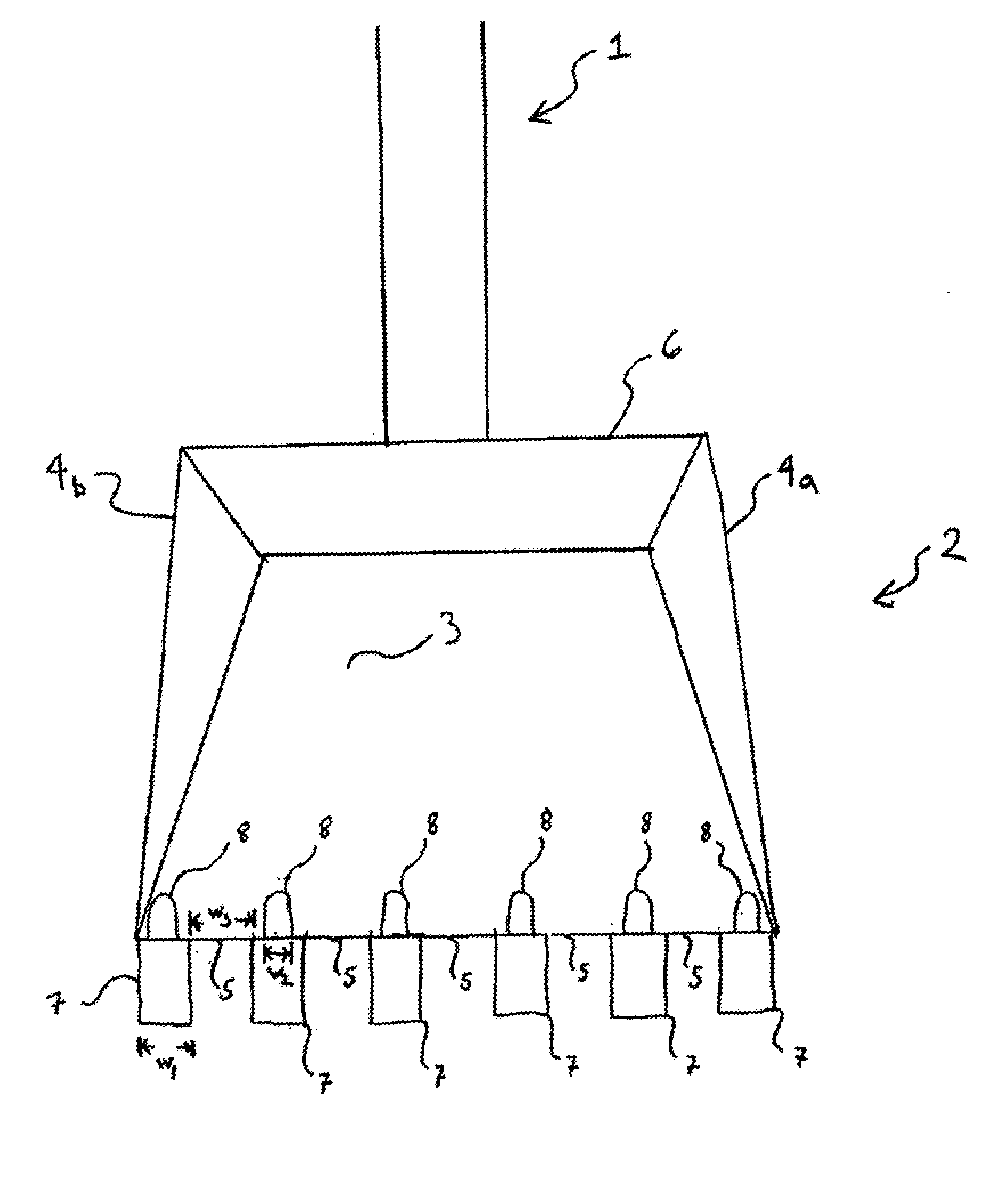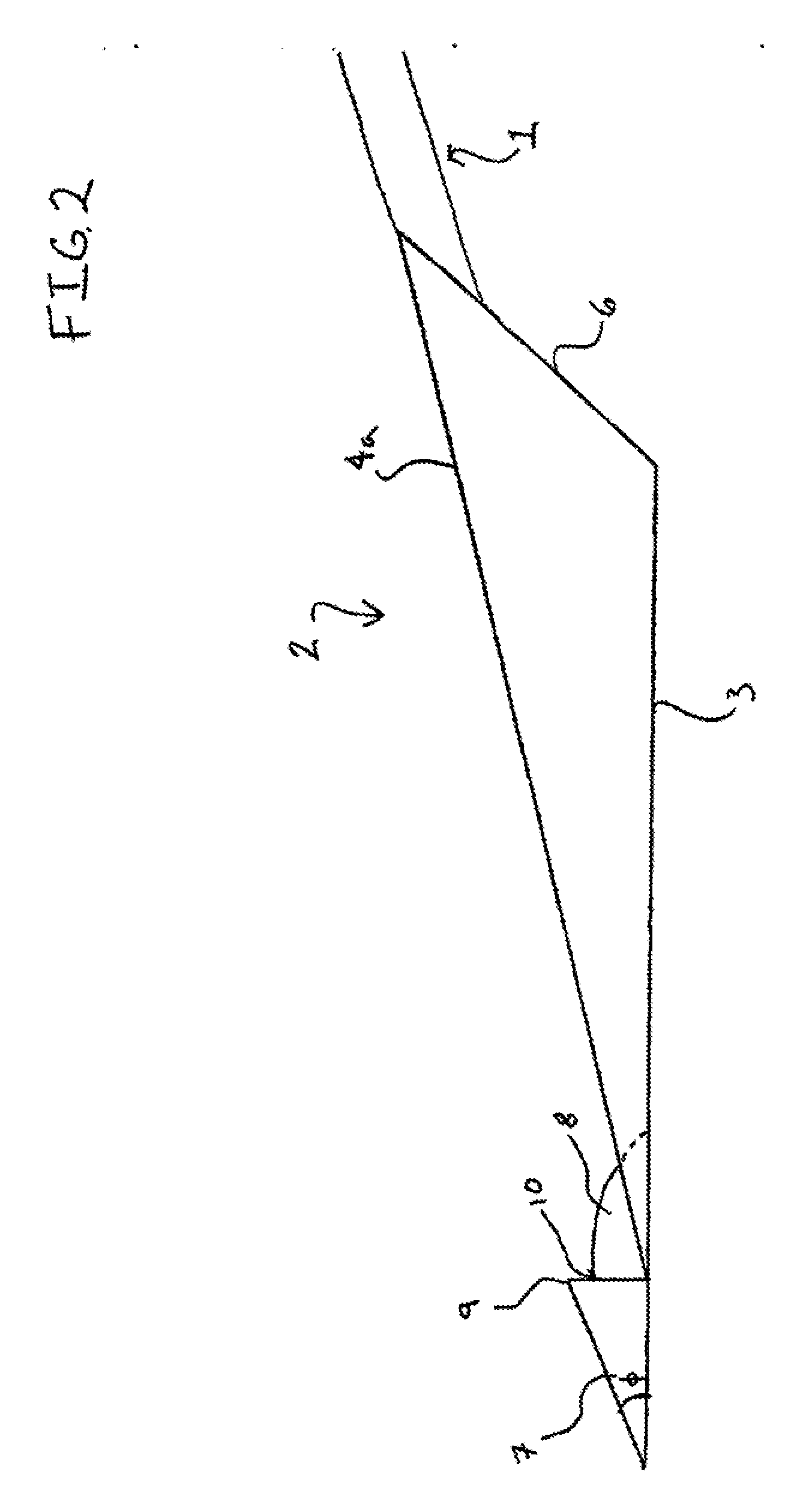Shovel
a shovel and blade technology, applied in the field of shovels, can solve the problems of increasing the difficulty of the blade portion of the shovel to penetrate the material, the difficulty of the operator to both continue to penetrate the material and and the difficulty of the operator to extract the blade from the material. the effect of less operation force, easy penetration and less stress on the operator
- Summary
- Abstract
- Description
- Claims
- Application Information
AI Technical Summary
Benefits of technology
Problems solved by technology
Method used
Image
Examples
Embodiment Construction
[0014]The preferred embodiments of the present invention are described with reference to the drawings below. In the drawings, like numbers are used to refer to like elements. The following is a description of the preferred embodiment of the present invention.
[0015]Referring to FIG. 1, the improved shovel is made of two parts, a handle 1 and a blade 2. As shown in FIG. 1, the blade is generally square in shape, having base plate 3 a first side 4a and a second side 4b, a front edge 5, and a back 6. The handle 1 of the shovel is connected to the back portion 6 of the blade 2 such that an operator may apply force to the handle and thereby manipulate the blade of the shovel. Additionally, a number of teeth are connected to the blade of the shovel. Each tooth 7 is connected to the front edge of the blade.
[0016]Because the profile of the front edge is preferably thin, on the order of 0.0625-0.125 inches for example, there is very little material to provide a connection between the teeth an...
PUM
 Login to View More
Login to View More Abstract
Description
Claims
Application Information
 Login to View More
Login to View More - R&D
- Intellectual Property
- Life Sciences
- Materials
- Tech Scout
- Unparalleled Data Quality
- Higher Quality Content
- 60% Fewer Hallucinations
Browse by: Latest US Patents, China's latest patents, Technical Efficacy Thesaurus, Application Domain, Technology Topic, Popular Technical Reports.
© 2025 PatSnap. All rights reserved.Legal|Privacy policy|Modern Slavery Act Transparency Statement|Sitemap|About US| Contact US: help@patsnap.com



